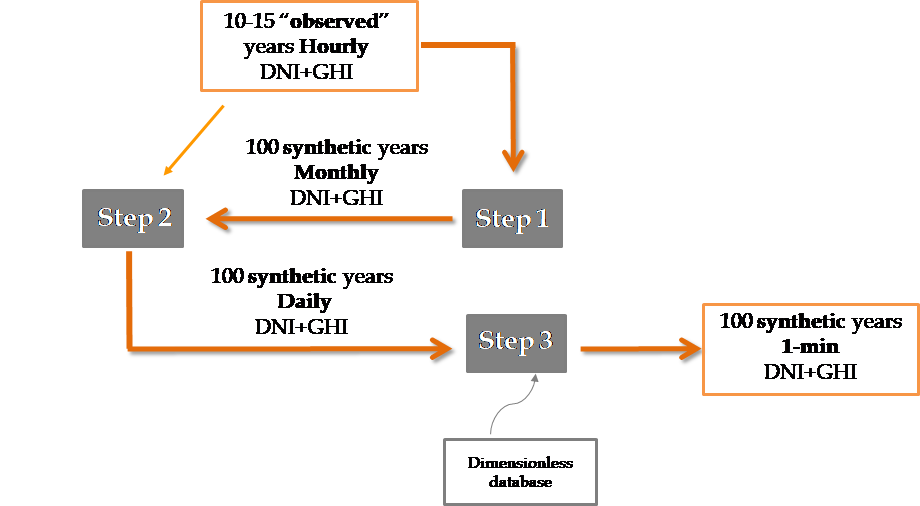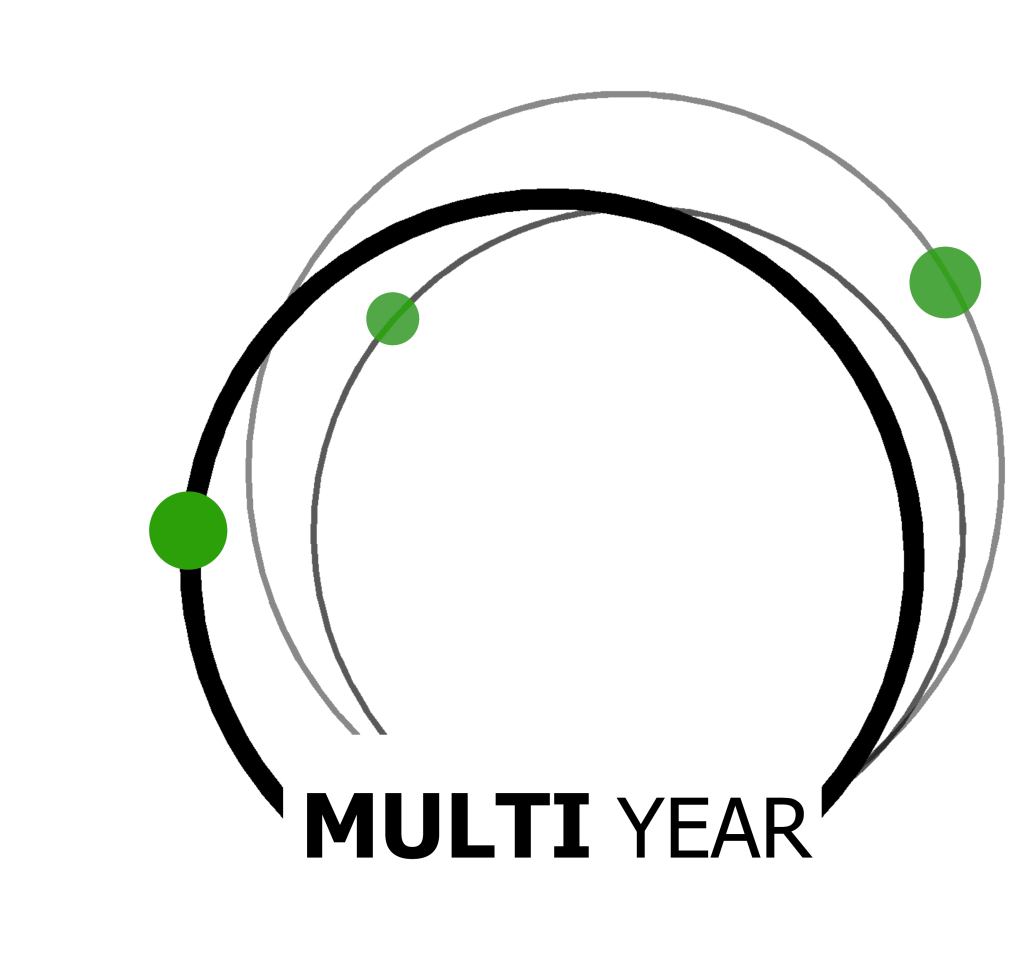|
Any use of the Multiyear tool in reports, articles, publications, presentations, or any other media format, should cite the following article for reference purposes: Larrañeta, M., Fernandez-Peruchena, C., Silva-Pérez, M.A., Lillo-bravo, I., Grantham, A., Boland, J. 2019. Generation of synthetic solar datasets for risk analysis. Solar Energy, 187, pp. 212-225
|
|
|
The Tool
The Multiyear tool is a globally applicable method for the synthetic generation of multiple annual solar radiation time series in one-minute resolution. The tool requires a minimum of 10 annual valid time sets (it is advisable to provide at least 15 annual sets) of at least hourly coupled DNI and GHI values. These datasets can be easily retrieved from satellite-based or reanalysis irradiance databases for most of the locations on earth.
The tool generates 100 annual sets of Plausible Solar Years (PSYs) of one-minute coupled GHI and DNI time series suitable for the stochastic assessment of the energy yield of solar harnessing systems.
The method implemented in the tool consists on the concatenation of three steps.
In the first step, we use a bootstrapping technique to generate synthetic monthly values from cumulative distribution functions (CDFs) of the observed monthly values. Then, the synthetically generated monthly values are combined to produce 100 synthetic years, each consisting of 12 synthetic monthly values (one per month of the year). The last two steps consist of the generation of synthetic daily and one-minute values for each month of the synthetic sets. In the second step, we us an AR model automatically modelled from the input data sets to generate synthetic daily data. In the third and last step, we downscale the synthetic solar radiation datasets from dimensionless solar radiation profiles trough the ND model. (See ND model tool at www.gter.es ).

|
Input file
The user can choose between two formats of input files
-
Solargis data sets
-
Basic data sets (hourly resolution)
-
Professional data sets (15-min resolution)
-
User defined data sets
Select csv comma-delimited file on disk. Use point as decimal separator. Input file may contain four columns of valid values of aggregated hourly-coupled GHI+DNI data for a period of at least 10 years
- Column 1. Date. dd/mm/yyyy/hh. Hour of the day from 0 to 23. Input data first row corresponds to hour 1.
- Column 2. GHI.
- Column 3. DNI.
Sample input file. Seville GHI+DNI 2007-2016. Download.
*GTER and/or any partner will not use input data for any industrial/academic purpose without the permission of the data owner.
|

